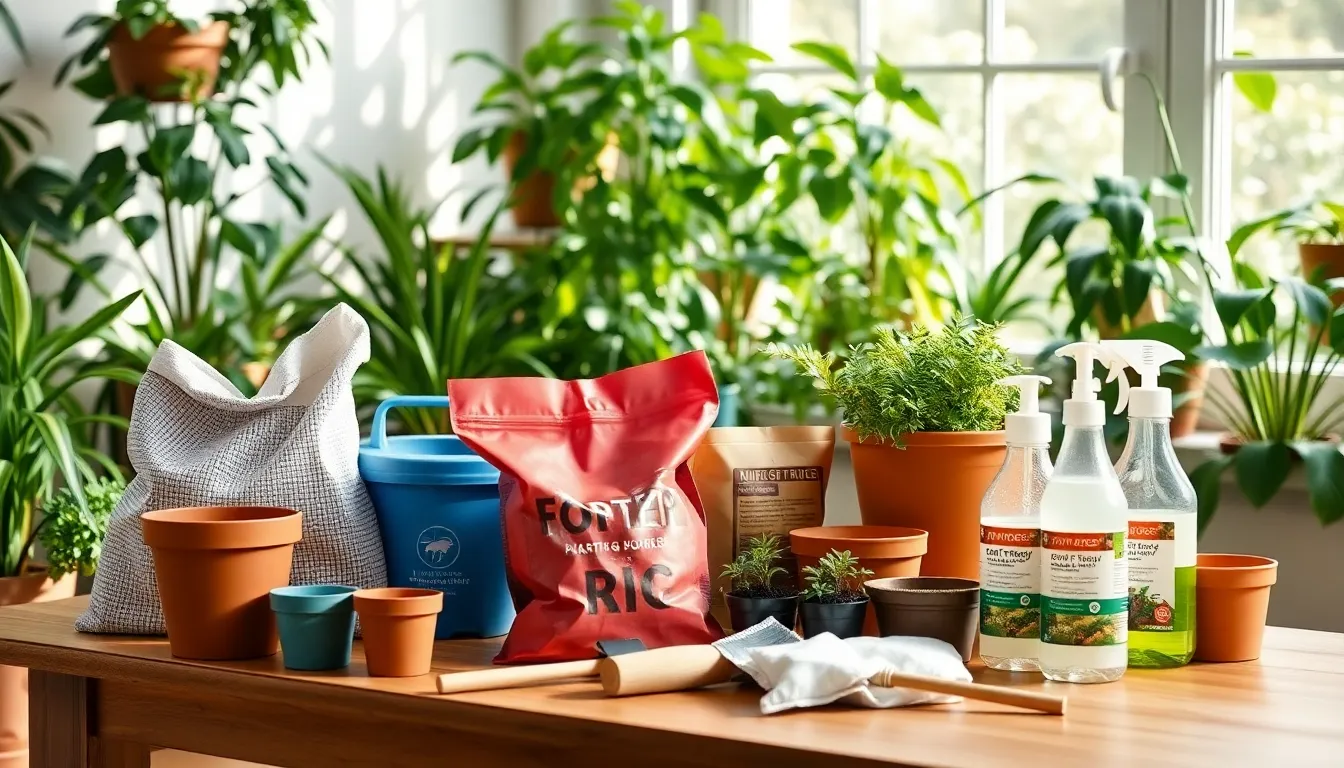Physical Address
304 North Cardinal St.
Dorchester Center, MA 02124

Imagine transforming your home into a lush oasis without ever stepping outside. Indoor gardening isn’t just a trend; it’s a way to bring life to your living space, boost your mood, and even improve air quality. Plus, who wouldn’t want to impress their friends with a thriving collection of houseplants that scream, “I’m a plant parent and I’ve got my life together!”
Indoor gardening offers significant advantages, transforming spaces and enhancing well-being through a variety of benefits.
Indoor plants naturally filter harmful pollutants, contributing to a healthier living environment. Common houseplants like snake plants, peace lilies, and spider plants excel at removing toxins such as formaldehyde and benzene. By increasing oxygen levels, these plants create fresh and breathable air. Studies have shown that indoor gardening can reduce airborne dust and improve humidity, which benefits respiratory health. Engaging with plants enhances air quality, making indoor spaces more inviting and pleasant.
Indoor gardening serves as a powerful stress reliever, promoting relaxation and improving mental health. People who care for plants often experience decreased anxiety levels. Plant care activities like watering and pruning provide a calming focus, redirecting attention away from daily stressors. Engaging with nature, even indoors, triggers the release of calming chemicals in the brain. Multiple studies indicate that spending time with plants can lower tension and boost overall mood. Indoor gardening encourages tranquility, creating serene spaces for mindfulness.

Indoor gardening requires specific tools to ensure success. Utilizing the right equipment simplifies plant care and enhances growth.
Choosing suitable planters and pots plays a critical role in indoor gardening. Clay pots provide excellent drainage while allowing roots to breathe. Plastic pots, though lighter and often more colorful, can retain moisture better and are easy to move. Self-watering pots offer convenience by maintaining consistent moisture levels. Selecting appropriately sized containers is essential; roots require space to grow. Consider the specific needs of plants when deciding on pot types, as each plant thrives in different environments.
Soil quality significantly influences plant health. A well-draining potting mix ensures proper root development and prevents waterlogging. Organic fertilizers contribute essential nutrients while promoting beneficial microbial activity in the soil. Liquid fertilizers provide quick nutrient absorption, making them ideal for rapid growth phases. Timing fertilizer application aligns with the growth cycle of the plants. Regular monitoring of soil moisture levels helps determine when to fertilize.
Selecting suitable plants ensures a thriving indoor garden tailored to individual environments. Factors include light availability, humidity, and temperature.
Low-light plants thrive in minimal natural light. These varieties adapt well to rooms with limited windows. Notable examples include the snake plant, which tolerates neglect and improves air quality, and the pothos, known for its trailing vines and heart-shaped leaves. ZZ plants stand out for their drought resistance and glossy foliage. Additionally, the peace lily offers beautiful white blooms even in shaded corners, making it a popular choice among indoor gardeners.
Flowering indoor plants add color and vibrancy to living spaces. African violets exhibit rich blooms and compact growth, perfect for tabletops. Orchids captivate with exotic flowers and come in various types, thriving with proper humidity. Furthermore, the bromeliad features bright flowers that last for months, requiring minimal care. Kalanchoe represents another option with its clusters of tiny flowers, ideal for cheerful displays indoors.
Indoor gardening thrives on proper care and understanding plant needs. Successful gardeners utilize effective techniques to ensure vibrant growth and health.
Proper watering techniques significantly impact plant wellbeing. Water plants deeply and allow soil to dry slightly between sessions. Utilizing a moisture meter aids in determining the right time for watering. Avoid overwatering, which can lead to root rot, by checking drainage holes for any trapped excess water. Choosing a watering schedule based on each plant’s requirements keeps them flourishing. For example, succulents require less frequent watering compared to tropical plants, which need more moisture. Always water early in the day or late afternoon to minimize evaporation.
Effective pest control strategies are crucial for maintaining healthy indoor plants. Inspect plants regularly for signs of common pests like aphids, spider mites, and mealybugs. Focusing on prevention keeps infestations at bay; maintaining clean foliage supports this effort. Introducing beneficial insects such as ladybugs or using insecticidal soap can address existing issues. It’s essential to quarantine new plants for a few weeks to ensure they aren’t carrying pests into the home environment. Regularly cleaning debris from pots and ensuring proper air circulation minimizes the likelihood of pest problems.
Mistakes can hinder the success of indoor gardening. Identifying common errors helps gardeners create thriving indoor spaces.
Overwatering plants creates excess moisture, leading to root rot. Gardeners often mistake dry soil as a sign to water again. Checking the top inch of soil can provide clarity on moisture levels. A moisture meter serves as a reliable tool for measuring soil saturation. Different plants may require various watering frequencies, depending on their specific needs. Establishing a consistent watering schedule helps prevent overwatering and promotes healthy growth.
Choosing the wrong plants significantly impacts indoor gardening success. Factors like light levels, humidity, and temperature determine which plants will thrive. Selecting low-light plants benefits spaces with limited sunlight. Snake plants and pothos adapt well to lower light conditions. Flowering plants such as orchids require more attention and specific lighting. Failing to consider these factors leads to frustration and unhealthy plants. Assessing the environment before making selections fosters a flourishing indoor garden.
Indoor gardening offers a rewarding way to enhance living spaces while promoting well-being. By selecting the right plants and using appropriate tools, anyone can create a thriving indoor garden that brings joy and tranquility. Regular care and attention to plant needs ensure a flourishing environment.
Avoiding common mistakes like overwatering and choosing plants suited to specific conditions can lead to greater success. With patience and practice, indoor gardening transforms not just homes but also the lives of those who embrace it. So grab those pots and start cultivating a vibrant indoor oasis today.